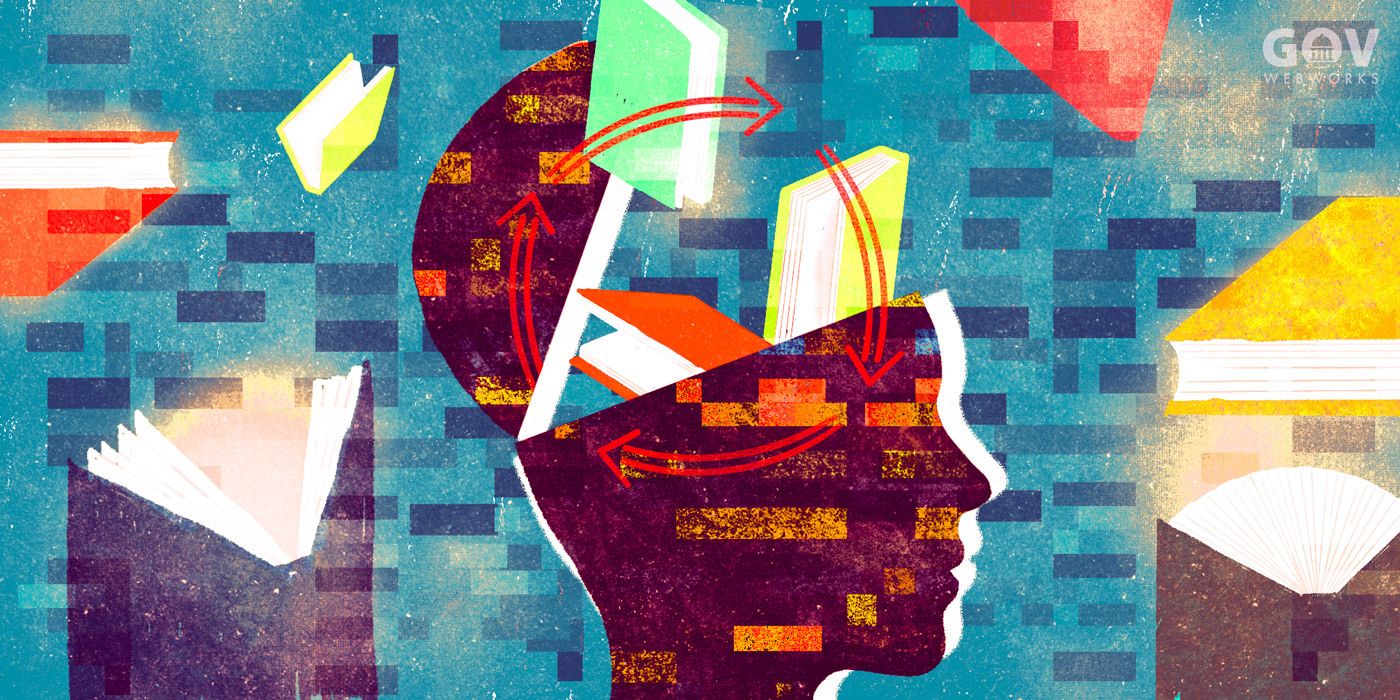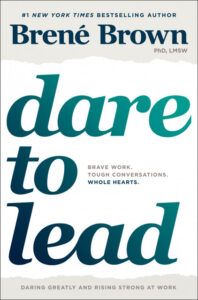By Danielle Blades
The year before my 40th birthday, I set the intention of “alignment” between my self awareness and my actions. I wanted to walk into my 40s with confidence and ease, not only as a project manager and agile lead, but as a mom, friend, partner, co-worker, and human. Though I dived into self-reflection activities including journaling, meditating, therapy, and lots of self-help books, that alignment and ease felt ever elusive.
It wasn’t until I went deeper into the uncomfortable territory of self-reflection, that I saw that the results I wanted weren’t about perfecting myself as an ideal project manager, mother, and human, but in seeing the moments of growth as they happened and enjoying the process. This blog is an effort at noticing how it went down for me. I hope it helps anyone facing similar self-actualization roadblocks.
Evolving my beliefs
“The purpose of learning isn’t to affirm our beliefs; it’s to evolve our beliefs.”
–Adam Grant, Think Again
In a past job, I was grappling with a very challenging work environment. The leadership team did not seem to appreciate my input; it felt to me that my ideas were being overlooked and that I was being undervalued. I found myself getting defensive in every meeting, and walking away heated and upset.
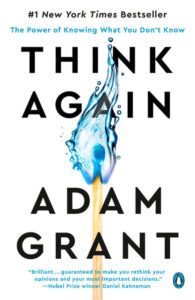 During a particularly frustrating week, I opened Think Again by Adam Grant to take a moment to cool off and read the section on detaching identity from opinions and ideas. For those who haven’t read it, Think Again breaks down the different mindsets we use to approach conversations, situations, relationships. It helps us to see how each of these mindsets can bring us closer to, or further from, our goal. He encourages the reader to “find joy in being wrong” and to let go of ego.
During a particularly frustrating week, I opened Think Again by Adam Grant to take a moment to cool off and read the section on detaching identity from opinions and ideas. For those who haven’t read it, Think Again breaks down the different mindsets we use to approach conversations, situations, relationships. It helps us to see how each of these mindsets can bring us closer to, or further from, our goal. He encourages the reader to “find joy in being wrong” and to let go of ego.
I was drawn to the part where Grant says that when our beliefs are linked too closely with our identity, we are less open to new information that may challenge our deeply held beliefs. Instead of holding on so tightly to being right, he says we are better served by thinking like scientists and recognizing how little we actually know about a given situation. That simple concept – let go of being right – smacked me hard in the face. I had tied my value as an employee to the success of my ideas, instead of asking if the idea itself was right for the situation. What if I tried to value curiosity over conflict?
In the next leadership meeting, when we put our ideas on the table, I vowed to be a scientist and spend the time getting curious. We evaluated each idea, asked every question, made no assumptions, and unearthed information we didn’t realize was important. By the end, we had a consensus on the next and best direction to take. Leadership was happy with the outcome of the meeting, and I walked away feeling heard, valued, and accomplished. By letting go of my need to be right, I opened myself up to all the possibilities leading me to more collaborative and productive outcomes. This approach not only improved my work environment, it also enriched my personal growth as I began to pursue major career changes.
Leaning into imposter syndrome
“When you think others are overestimating you, it’s more likely that you’re underestimating yourself.”
–Adam Grant, Think Again
When I began a new role as a product manager, it was a major change, and I began to feel vastly under qualified. It was around this time that I came to the chapter in Think Again on the Dunning-Kruger effect. This cognitive bias leads people with limited competence in a particular domain to overestimate their abilities and can result in the ‘Couch Coach’ – someone who has never played the game, but thinks they know more than the coach after reading one ESPN article.
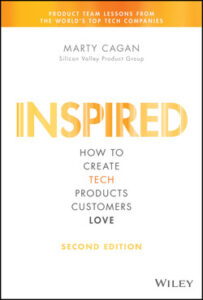 The other side of the Couch Coach is imposter Syndrome. “When you think others are overestimating you, it’s more likely that you’re underestimating yourself,” Grant wrote, which struck a chord with me. I jumped on his suggestion to reframe the common take on imposter syndrome. Instead of thinking it’s a clue that we’re unqualified, take it as a sign of hidden potential. In my effort to actively embrace a growth mindset, I got curious about any resource that could facilitate learning and growth. I read Marty Cagan’s Inspired and Teresa Torres’ Continuous Discovery Habits. Both books are centered around building the right products to solve users’ problems, and how to empower teams and stay curious. I hired a Product/Career Coach and signed up for peer mentoring, which I still participate in today because it’s one of the best things I’ve ever done. As a result, I learned as much as I could about being an okay, a good, and a great Product Manager. While I failed quite a few times and made some small (and some big) mistakes, I grew exponentially as an employee, co-worker, and, sort of surprisingly (though it shouldn’t be), as a human.
The other side of the Couch Coach is imposter Syndrome. “When you think others are overestimating you, it’s more likely that you’re underestimating yourself,” Grant wrote, which struck a chord with me. I jumped on his suggestion to reframe the common take on imposter syndrome. Instead of thinking it’s a clue that we’re unqualified, take it as a sign of hidden potential. In my effort to actively embrace a growth mindset, I got curious about any resource that could facilitate learning and growth. I read Marty Cagan’s Inspired and Teresa Torres’ Continuous Discovery Habits. Both books are centered around building the right products to solve users’ problems, and how to empower teams and stay curious. I hired a Product/Career Coach and signed up for peer mentoring, which I still participate in today because it’s one of the best things I’ve ever done. As a result, I learned as much as I could about being an okay, a good, and a great Product Manager. While I failed quite a few times and made some small (and some big) mistakes, I grew exponentially as an employee, co-worker, and, sort of surprisingly (though it shouldn’t be), as a human.
In my current role as Project Manager & Agile Lead at Portland Webworks, I knew from past experience to leverage my feelings of imposter syndrome as catalysts for growth rather than signs of inadequacy. When I leaned into the opportunity to embrace the unknown and learn as much as I could about it, the result was to relaunch the company book club as a way of continuing to be curious and learn from others.
Making better decisions
“Reacting without reasoning makes every situation worse. Whether big or small, these unforced errors consume significant time and energy just to get you back to where you were before.”
–Shane Parrish, Clear Thinking
The title for our first book club meeting was Shane Parrish’s Clear Thinking, in which Parrish offers guidelines on how to make better decisions through self-awareness. I was drawn to his descriptions of our biological tendencies, their impact on decision making, and our brain’s four default reactions.
The four defaults are:
- Emotion: We respond to feelings rather than reasons and facts.
- Ego: We react to anything that threatens our sense of self-worth.
- Social: We conform to the norms of our larger social group.
- Inertia: We prefer ideas, processes, and environments that are familiar.
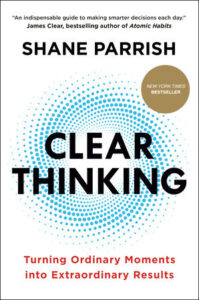 Parrish provides examples of each of these defaults and offers questions you can ask yourself to determine if you are, in fact, falling into one of the defaults. The effort to determine which default is your go-to takes a degree of self-awareness and isn’t as simple as it sounds.
Parrish provides examples of each of these defaults and offers questions you can ask yourself to determine if you are, in fact, falling into one of the defaults. The effort to determine which default is your go-to takes a degree of self-awareness and isn’t as simple as it sounds.
However, I soon realized I can be reactive around the emotion I’m feeling in a situation rather than responding to the facts. The emotion default continued to become apparent to me not only in my interactions at work but also in stressful situations with my child. Parenting during times of stress underscores the high cost of reactive decision-making – no one wants to lose it with their kid. After learning to master the emotion around getting my son to school on time, it became easier to identify other situations when I’d fallen into the emotion default.
One day, I received a few requests from my coworkers to limit one-on-one meetings and I found myself getting flustered and upset. These requests felt like they came out of nowhere and were one right after the other. Did people not value my time or input? This down spiral into the emotion default made it difficult to interact or make sound decisions. Later that day, during a company meeting, I learned we were all being asked to limit our non-billable work (including one-on-ones), in an effort to be more budget-conscious. All that spiraling wasn’t just useless, it could have been damaging to my work relationships. When I went back to my learnings from Clear Thinking, I realized I was the only one responsible for the angst!
Staying on track
“Practice isn’t the thing you do once you’re good. It’s the thing you do that makes you good.”
– Malcolm Gladwell, Outliers: The Story of Success
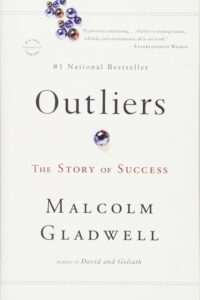 While I initially undertook this journey as a vague endeavor to gain a better understanding of myself, it has changed the way I go about such endeavors altogether. The practices I’ve learned keep me grounded and focused, reminding me not to strive to reach a particular goal, but to simply embrace patience and persistence daily.
While I initially undertook this journey as a vague endeavor to gain a better understanding of myself, it has changed the way I go about such endeavors altogether. The practices I’ve learned keep me grounded and focused, reminding me not to strive to reach a particular goal, but to simply embrace patience and persistence daily.
The following are some of my daily practices that help me stay on track and push me to continue to grow and learn.
Follow thought leaders, listen to podcasts, and devour books
My favorite thought leaders, or what Parrish calls my Board of Directors, include Adam Grant, Brene Brown, Shane Parrish, and Simon Sinek. I find that reading actual paper and book-jacket books, where I can take copious notes in the margins, is the best way for me to consume new information. I didn’t intend to read the following books in the order I did, but the concepts, frameworks, and actions in each built upon the others in a manner that made sense.
Reading list:
- Marty Cagan’s Inspired
- Adam Grant’s Think Again
- Shane Parrish’s Clear Thinking
- Brene Brown’s Dare to Lead (actively reading this)
- Malcolm Gladwell’s Outliers: The Story of Success (up next)
Be kind, not just nice
In Clear Thinking, Shane Parrish talks about “being kind, not nice.” A kind person will tell you your fly is down to save you from future uncomfort, a nice person won’t because it’s uncomfortable in the moment. Adam Grant uses the word ‘polite’ instead of ‘nice’ and describes it a bit differently but in the same vein. “We’re confusing politeness with kindness,” Grant writes. “Being polite is withholding feedback to make someone feel good today. Being kind is being candid about how they can get better tomorrow.” I started practicing being kind instead of nice and asked those in my life to do the same with me. It was awkward and forced at first, but now that I’ve established this mindset with those in my life, it is expected amongst us to call out the uncomfortable and difficult things for the sake of a better tomorrow.
Practice daily journaling
I admit I have not always been a fan of journaling. As a recovering perfectionist, I often struggled to put pen to paper if the thought felt half baked or if I couldn’t eloquently articulate what I felt. Once I adopted the practice of listing bullet points (instead of trying to write out a fully developed novel), I found that journaling became much easier, and I appreciated the practice of getting the thoughts out of my head to free up space. Journaling has helped me to recalibrate from a fixed, to a growth mindset.
In my journaling, I focus on five main areas:
1. Gratitude
First thing in the morning, I list three things I’m grateful for. It can be anything and is often the first three things that pop into my head. When I listen to my intuition, it’s usually spot on.
Today’s three things I’m grateful for are:
- Productive and focused mornings
- Delicious coffee
- Writing this blog post
2. Personal Board of Directors
In Clear Thinking, Parrish encourages us to identify our “exemplars” – the people, living or dead, that raise our personal standards and make us better in a certain area. Then you create space in your journaling to reflect on what they’d do in your position.
Today’s Board of Directors pick is:
- Dan Bermann is an advocate with non-verbal autism who gave the keynote speech at a conference I attended. He spoke on how important it is to “presume competence.” This stuck with me, and feels similar to my work around reframing imposter syndrome. To keep going on this blog, it helps to adopt Dan’s mantra and presume competence.
3. Intention
I like to set a yearly intention, as mentioned above, but I also set a daily intention. If I find myself straying from that intention, I come back around to it. Similar to breath work when you’re feeling anxious, this practice is grounding and brings me back to the present and current task at hand.
Today’s intention is:
- Patience (to finish this blog post)
4. Wins
I make it a point to list at least one win of the day, and it can be anything. All wins deserve a shout-out!
Today’s win is:
- Not giving up!
5. Grace
Having grace with myself reminds me that we are not perfect and we will make mistakes. Without grace, it’s easy to get stuck in a negative thought loop. To remind myself of this, I like to identify one area where I’m giving myself grace.
Today’s moment of grace is:
- Sending this post in for editing
In summary
“Every ceiling, when reached, becomes a floor, upon which one walks as a matter of course and prescriptive right.”
–Aldous Huxley
As I celebrated turning 40 in January, I reflected on a year marked by discomfort but also immense personal fulfillment and growth. The journey to the authentic self (as a human, companion, employee) is ongoing and happens in pieces and stages. Sometimes it doesn’t make sense until you’re ready to walk into the next decade.
When I remember to give myself some grace, I know I’m not going to make the right or best decision every time. I also might forget to do the things that ground me like journaling or meditating. Grace means allowing myself the space to fail, to make mistakes, to learn, and then get back up and try again. Thanks for taking the time to read about my journey. Here’s to the growth and success of yours!
Learn more
- Check out our current job openings
- Contact us with any questions
- See PWW/GWW clients: Portfolio of work
- Visit us on social media: LinkedIn, Facebook, Twitter, Instagram
